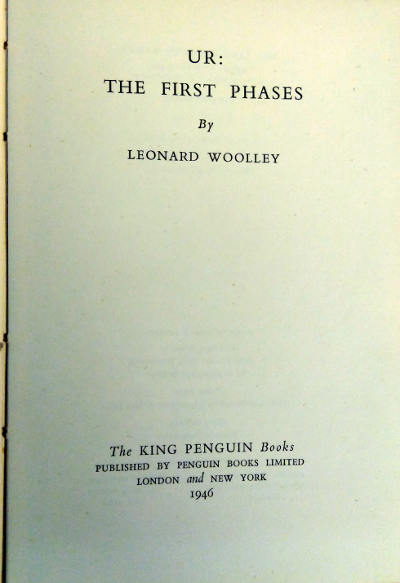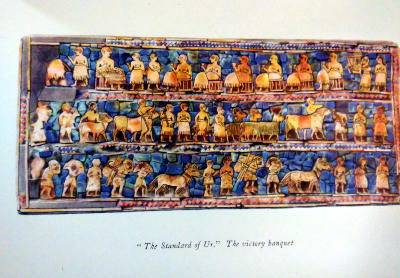A short, early King Penguin edition of popular history/archaeology, documenting the early periods of Ur, based on the author’s excavations.
About the author (from Wikipedia):
Sir Charles Leonard Woolley (17 April 1880 – 20 February 1960) was a British archaeologist best known for his excavations at Ur in Mesopotamia. He is recognized as one of the first “modern” archaeologists who excavated in a methodical way, keeping careful records, and using them to reconstruct ancient life and history.
Woolley led a joint expedition of the British Museum and the University of Pennsylvania to Ur, beginning in 1922, which included his wife, the British archaeologist Katharine Woolley. There, they made important discoveries, including the Copper Bull and the Bull-Headed Lyre.In the course of excavating the royal cemetery and the pair of Ram in a Thicket figurines. Agatha Christie’s novel, Murder in Mesopotamia, was inspired by the discovery of the royal tombs. Christie later married Woolley’s young assistant, Max Mallowan.
Ur was the burial site of what may have been many Sumerian royals. The Woolleys discovered tombs of great material wealth, containing large paintings of ancient Sumerian culture at its zenith, along with gold and silver jewellery, cups and other furnishings. The most extravagant tomb was that of “Queen” Pu-Abi. Amazingly enough, Queen Pu-Abi’s tomb was untouched by looters. Inside the tomb, many well-preserved items were found, including a cylindrical seal bearing her name in Sumerian. Her body was found buried along with those of two attendants, who had presumably been poisoned to continue to serve her after death. Woolley was able to reconstruct Pu-Abi’s funeral ceremony from objects found in her tomb.




